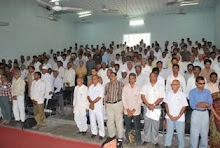Hindustan Times: G Mohuiddin Jeddy: Navi Mumbai: Saturday, July 01, 2023.
Respnding to the claims, the JNPA issued a statement saying that the said land is reserved for rehabilitation of Project Affected Peoples (PAPs). The JNPA has not buried any intertidal wetland in this area. The said area is not wetland as per the Wetland (Conservation and Management) Rule 2017 and Brief Document of Raigad District.
About 220 hectares of government-listed ‘intertidal wetlands’ – equivalent to the size of 22 Azad Maidans — in Uran has been buried under debris dumped by the Jawaharlal Nehru Port Authority (JNPA), claimed environmentalists quoting a report of an official inspection. The environmentalists contend that the JNPA wants to use this buried ‘wetland’ to allocate plots for project affected people (PAP), instead of the land (developed area) acquired from the locals for this purpose.
The inspection was done on Wednesday following complaints from NatConnect Foundation director B N Kumar to the government and the high court-appointed Wetland Committee that the water bodies have been wiped out threatening Uran with floods.
“The JNPA plans to allocate plots on the Jasai wetland under the 12.5% compensation scheme for the PAP, as a sign board at the site shows. The JNPA, instead, ought to have given 12.5% of the developed area to the project-hit and not destroyed a listed wetland,” said Kumar.
B G Basambekar, revenue circle inspector, who conducted the inspection said, “Around 3.5 km-long and half-a-km wide area, stretching from Dastan Phata to Karal junction, has been buried under stones and debris. As a result, the height of the area has gone up to about seven feet along the NH348.”
He said that similar dumping of debris and stones has been carried out in Savarkhar area as well.Basambekar said, “These areas have not been notified as wetlands. There is a work order issued by CIDCO (City and Industrial Development Corporation) for filling up the area given to the JNPA, for the purpose of development.”
The JNPA, CIDCO and other concerned agencies have repeatedly stated that there are no wetlands in the area and dismissed the claims and allegations of the green activists as misinformation.
The agencies have stated that no wetlands have been notified in the area with the original status being paddy field etc. They claim that the land allotted to various projects are as per norms stipulated and are used as per the land use policy of the government.
Respnding to the claims, the JNPA issued a statement saying that the said land is reserved for rehabilitation of Project Affected Peoples (PAPs). The JNPA has not buried any intertidal wetland in this area. The said area is not wetland as per the Wetland (Conservation and Management) Rule 2017 and Brief Document of Raigad District.
However, environmentalists claimed that the lands do figure on the Wetlands List of 2010 as confirmed by an earlier report submitted by the Raigad collector to the Wetland Ccmmittee. The water bodies, however, have not been notified by the government, according to the minutes of the 39th meeting of the wetland committee held on May 16.
Stalin D, of NGO Vanashakti and the director and member of Wetland Committee, who called for protecting the wetlands said, listing or notifying is a bureaucratic process which should not in any way impact environmental protection.
The Supreme Court has also ordered that wetlands above the size of 2.25 hectares must be protected and the Uran water bodies are not small ponds, said Stalin.
“We had lodged a complaint with the Wetland Committee five years ago when the burial of 200 hectares started,” said Kumar. The initial inspection report of December 24, 2018, confirmed that the dumping of debris was in progress, he said.
The debris dumping was stopped for a while but resumed with a vengeance, said environmentalists. Similar practice has been seen at 22-hectare Savarkhar wetlands as well, said the greens.
“The JNPA even constructed a Shiv Smarak in memory of Chhatrapati Shivaji Maharaj on the wetland, as if to justify its action,” said Nandakumar Pawar, head of Shree Ekvira Aai Pratishthan (SEAP).
“Basically, it was wrong on part of CIDCO to have allotted the wetlands to the JNPA for development,” added Pawar. He said he was shocked that the JNPA, in response to his RTI query, has denied destruction of the Jasai wetland. The continuous destruction of wetlands and mangroves in Uran reflect the lack of respect for the environment by the central and state government bodies, he said.
Kumar said, “Wetlands act as flood control mechanisms, apart from being sources of survival for the traditional small fishing communities. The conversion of wetlands into concrete jungles, therefore, will cause havoc in the region.” “CIDCO or JNPA officers come and go, it is the people living here who will have to suffer due to the destruction of fragile ecological balance,” said Pawar.
The port authority, CIDCO and other concerned agencies have also pointed out that as per the Wetland (Conservation and Management) Rule 2017 Gazette Notification dated 26/9/2017, it is defined wetland as under: (g) “wetland” means.....does not include river channels, paddy fields, human made water bodies / tanks specifically constructed for drinking water purposes and structures specifically constructed for aquaculture, salt production, recreation, and irrigation purposes.














































































